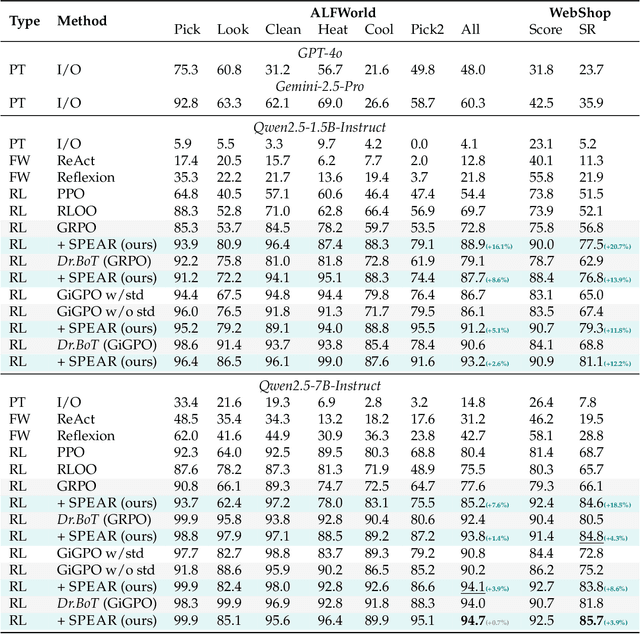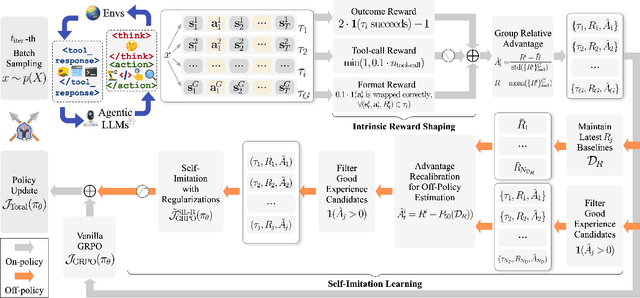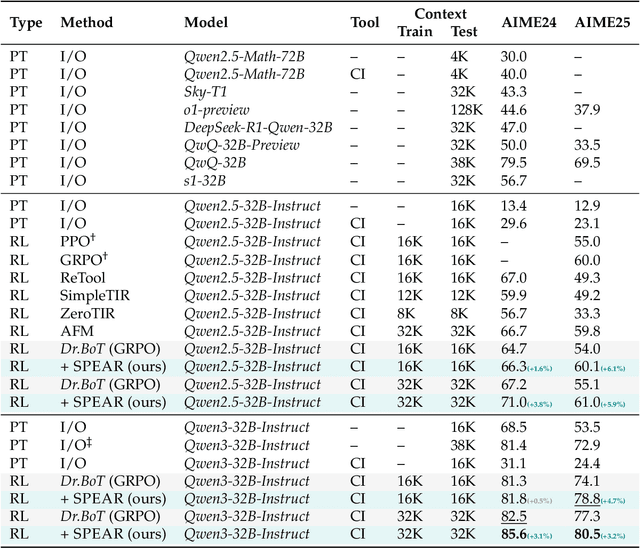Xuan Zhang
CircuitSense: A Hierarchical Circuit System Benchmark Bridging Visual Comprehension and Symbolic Reasoning in Engineering Design Process
Sep 26, 2025Abstract:Engineering design operates through hierarchical abstraction from system specifications to component implementations, requiring visual understanding coupled with mathematical reasoning at each level. While Multi-modal Large Language Models (MLLMs) excel at natural image tasks, their ability to extract mathematical models from technical diagrams remains unexplored. We present \textbf{CircuitSense}, a comprehensive benchmark evaluating circuit understanding across this hierarchy through 8,006+ problems spanning component-level schematics to system-level block diagrams. Our benchmark uniquely examines the complete engineering workflow: Perception, Analysis, and Design, with a particular emphasis on the critical but underexplored capability of deriving symbolic equations from visual inputs. We introduce a hierarchical synthetic generation pipeline consisting of a grid-based schematic generator and a block diagram generator with auto-derived symbolic equation labels. Comprehensive evaluation of six state-of-the-art MLLMs, including both closed-source and open-source models, reveals fundamental limitations in visual-to-mathematical reasoning. Closed-source models achieve over 85\% accuracy on perception tasks involving component recognition and topology identification, yet their performance on symbolic derivation and analytical reasoning falls below 19\%, exposing a critical gap between visual parsing and symbolic reasoning. Models with stronger symbolic reasoning capabilities consistently achieve higher design task accuracy, confirming the fundamental role of mathematical understanding in circuit synthesis and establishing symbolic reasoning as the key metric for engineering competence.
Learn the Ropes, Then Trust the Wins: Self-imitation with Progressive Exploration for Agentic Reinforcement Learning
Sep 26, 2025



Abstract:Reinforcement learning (RL) is the dominant paradigm for sharpening strategic tool use capabilities of LLMs on long-horizon, sparsely-rewarded agent tasks, yet it faces a fundamental challenge of exploration-exploitation trade-off. Existing studies stimulate exploration through the lens of policy entropy, but such mechanical entropy maximization is prone to RL training instability due to the multi-turn distribution shifting. In this paper, we target the progressive exploration-exploitation balance under the guidance of the agent own experiences without succumbing to either entropy collapsing or runaway divergence. We propose SPEAR, a curriculum-based self-imitation learning (SIL) recipe for training agentic LLMs. It extends the vanilla SIL framework, where a replay buffer stores self-generated promising trajectories for off-policy update, by gradually steering the policy evolution within a well-balanced range of entropy across stages. Specifically, our approach incorporates a curriculum to manage the exploration process, utilizing intrinsic rewards to foster skill-level exploration and facilitating action-level exploration through SIL. At first, the auxiliary tool call reward plays a critical role in the accumulation of tool-use skills, enabling broad exposure to the unfamiliar distributions of the environment feedback with an upward entropy trend. As training progresses, self-imitation gets strengthened to exploit existing successful patterns from replayed experiences for comparative action-level exploration, accelerating solution iteration without unbounded entropy growth. To further stabilize training, we recalibrate the advantages of experiences in the replay buffer to address the potential policy drift. Reugularizations such as the clipping of tokens with high covariance between probability and advantage are introduced to the trajectory-level entropy control to curb over-confidence.
Visual-CoG: Stage-Aware Reinforcement Learning with Chain of Guidance for Text-to-Image Generation
Aug 25, 2025Abstract:Despite the promising progress of recent autoregressive models in text-to-image (T2I) generation, their ability to handle multi-attribute and ambiguous prompts remains limited. To address these limitations, existing works have applied chain-of-thought (CoT) to enable stage-aware visual synthesis and employed reinforcement learning (RL) to improve reasoning capabilities. However, most models provide reward signals only at the end of the generation stage. This monolithic final-only guidance makes it difficult to identify which stages contribute positively to the final outcome and may lead to suboptimal policies. To tackle this issue, we propose a Visual-Chain of Guidance (Visual-CoG) paradigm consisting of three stages: semantic reasoning, process refining, and outcome evaluation, with stage-aware rewards providing immediate guidance throughout the image generation pipeline. We further construct a visual cognition benchmark, VisCog-Bench, which comprises four subtasks to evaluate the effectiveness of semantic reasoning. Comprehensive evaluations on GenEval, T2I-CompBench, and the proposed VisCog-Bench show improvements of 15%, 5%, and 19%, respectively, demonstrating the superior performance of the proposed Visual-CoG. We will release all the resources soon.
Efficient Prediction of SO(3)-Equivariant Hamiltonian Matrices via SO(2) Local Frames
Jun 11, 2025Abstract:We consider the task of predicting Hamiltonian matrices to accelerate electronic structure calculations, which plays an important role in physics, chemistry, and materials science. Motivated by the inherent relationship between the off-diagonal blocks of the Hamiltonian matrix and the SO(2) local frame, we propose a novel and efficient network, called QHNetV2, that achieves global SO(3) equivariance without the costly SO(3) Clebsch-Gordan tensor products. This is achieved by introducing a set of new efficient and powerful SO(2)-equivariant operations and performing all off-diagonal feature updates and message passing within SO(2) local frames, thereby eliminating the need of SO(3) tensor products. Moreover, a continuous SO(2) tensor product is performed within the SO(2) local frame at each node to fuse node features, mimicking the symmetric contraction operation. Extensive experiments on the large QH9 and MD17 datasets demonstrate that our model achieves superior performance across a wide range of molecular structures and trajectories, highlighting its strong generalization capability. The proposed SO(2) operations on SO(2) local frames offer a promising direction for scalable and symmetry-aware learning of electronic structures. Our code will be released as part of the AIRS library https://github.com/divelab/AIRS.
NeurIPS 2024 ML4CFD Competition: Results and Retrospective Analysis
Jun 10, 2025Abstract:The integration of machine learning (ML) into the physical sciences is reshaping computational paradigms, offering the potential to accelerate demanding simulations such as computational fluid dynamics (CFD). Yet, persistent challenges in accuracy, generalization, and physical consistency hinder the practical deployment of ML models in scientific domains. To address these limitations and systematically benchmark progress, we organized the ML4CFD competition, centered on surrogate modeling for aerodynamic simulations over two-dimensional airfoils. The competition attracted over 240 teams, who were provided with a curated dataset generated via OpenFOAM and evaluated through a multi-criteria framework encompassing predictive accuracy, physical fidelity, computational efficiency, and out-of-distribution generalization. This retrospective analysis reviews the competition outcomes, highlighting several approaches that outperformed baselines under our global evaluation score. Notably, the top entry exceeded the performance of the original OpenFOAM solver on aggregate metrics, illustrating the promise of ML-based surrogates to outperform traditional solvers under tailored criteria. Drawing from these results, we analyze the key design principles of top submissions, assess the robustness of our evaluation framework, and offer guidance for future scientific ML challenges.
A Two-Phase Deep Learning Framework for Adaptive Time-Stepping in High-Speed Flow Modeling
Jun 09, 2025Abstract:We consider the problem of modeling high-speed flows using machine learning methods. While most prior studies focus on low-speed fluid flows in which uniform time-stepping is practical, flows approaching and exceeding the speed of sound exhibit sudden changes such as shock waves. In such cases, it is essential to use adaptive time-stepping methods to allow a temporal resolution sufficient to resolve these phenomena while simultaneously balancing computational costs. Here, we propose a two-phase machine learning method, known as ShockCast, to model high-speed flows with adaptive time-stepping. In the first phase, we propose to employ a machine learning model to predict the timestep size. In the second phase, the predicted timestep is used as an input along with the current fluid fields to advance the system state by the predicted timestep. We explore several physically-motivated components for timestep prediction and introduce timestep conditioning strategies inspired by neural ODE and Mixture of Experts. As ShockCast is the first framework for learning high-speed flows, we evaluate our methods by generating two supersonic flow datasets, available at https://huggingface.co/datasets/divelab. Our code is publicly available as part of the AIRS library (https://github.com/divelab/AIRS).
Beyond the Norm: A Survey of Synthetic Data Generation for Rare Events
Jun 04, 2025Abstract:Extreme events, such as market crashes, natural disasters, and pandemics, are rare but catastrophic, often triggering cascading failures across interconnected systems. Accurate prediction and early warning can help minimize losses and improve preparedness. While data-driven methods offer powerful capabilities for extreme event modeling, they require abundant training data, yet extreme event data is inherently scarce, creating a fundamental challenge. Synthetic data generation has emerged as a powerful solution. However, existing surveys focus on general data with privacy preservation emphasis, rather than extreme events' unique performance requirements. This survey provides the first overview of synthetic data generation for extreme events. We systematically review generative modeling techniques and large language models, particularly those enhanced by statistical theory as well as specialized training and sampling mechanisms to capture heavy-tailed distributions. We summarize benchmark datasets and introduce a tailored evaluation framework covering statistical, dependence, visual, and task-oriented metrics. A central contribution is our in-depth analysis of each metric's applicability in extremeness and domain-specific adaptations, providing actionable guidance for model evaluation in extreme settings. We categorize key application domains and identify underexplored areas like behavioral finance, wildfires, earthquakes, windstorms, and infectious outbreaks. Finally, we outline open challenges, providing a structured foundation for advancing synthetic rare-event research.
Rethinking Regularization Methods for Knowledge Graph Completion
May 29, 2025Abstract:Knowledge graph completion (KGC) has attracted considerable attention in recent years because it is critical to improving the quality of knowledge graphs. Researchers have continuously explored various models. However, most previous efforts have neglected to take advantage of regularization from a deeper perspective and therefore have not been used to their full potential. This paper rethinks the application of regularization methods in KGC. Through extensive empirical studies on various KGC models, we find that carefully designed regularization not only alleviates overfitting and reduces variance but also enables these models to break through the upper bounds of their original performance. Furthermore, we introduce a novel sparse-regularization method that embeds the concept of rank-based selective sparsity into the KGC regularizer. The core idea is to selectively penalize those components with significant features in the embedding vector, thus effectively ignoring many components that contribute little and may only represent noise. Various comparative experiments on multiple datasets and multiple models show that the SPR regularization method is better than other regularization methods and can enable the KGC model to further break through the performance margin.
ALTER: All-in-One Layer Pruning and Temporal Expert Routing for Efficient Diffusion Generation
May 27, 2025Abstract:Diffusion models have demonstrated exceptional capabilities in generating high-fidelity images. However, their iterative denoising process results in significant computational overhead during inference, limiting their practical deployment in resource-constrained environments. Existing acceleration methods often adopt uniform strategies that fail to capture the temporal variations during diffusion generation, while the commonly adopted sequential pruning-then-fine-tuning strategy suffers from sub-optimality due to the misalignment between pruning decisions made on pretrained weights and the model's final parameters. To address these limitations, we introduce ALTER: All-in-One Layer Pruning and Temporal Expert Routing, a unified framework that transforms diffusion models into a mixture of efficient temporal experts. ALTER achieves a single-stage optimization that unifies layer pruning, expert routing, and model fine-tuning by employing a trainable hypernetwork, which dynamically generates layer pruning decisions and manages timestep routing to specialized, pruned expert sub-networks throughout the ongoing fine-tuning of the UNet. This unified co-optimization strategy enables significant efficiency gains while preserving high generative quality. Specifically, ALTER achieves same-level visual fidelity to the original 50-step Stable Diffusion v2.1 model while utilizing only 25.9% of its total MACs with just 20 inference steps and delivering a 3.64x speedup through 35% sparsity.
Sparse-to-Dense: A Free Lunch for Lossless Acceleration of Video Understanding in LLMs
May 25, 2025Abstract:Due to the auto-regressive nature of current video large language models (Video-LLMs), the inference latency increases as the input sequence length grows, posing challenges for the efficient processing of video sequences that are usually very long. We observe that during decoding, the attention scores of most tokens in Video-LLMs tend to be sparse and concentrated, with only certain tokens requiring comprehensive full attention. Based on this insight, we introduce Sparse-to-Dense (StD), a novel decoding strategy that integrates two distinct modules: one leveraging sparse top-K attention and the other employing dense full attention. These modules collaborate to accelerate Video-LLMs without loss. The fast (sparse) model speculatively decodes multiple tokens, while the slow (dense) model verifies them in parallel. StD is a tuning-free, plug-and-play solution that achieves up to a 1.94$\times$ walltime speedup in video processing. It maintains model performance while enabling a seamless transition from a standard Video-LLM to a sparse Video-LLM with minimal code modifications.
 Add to Chrome
Add to Chrome Add to Firefox
Add to Firefox Add to Edge
Add to Edge